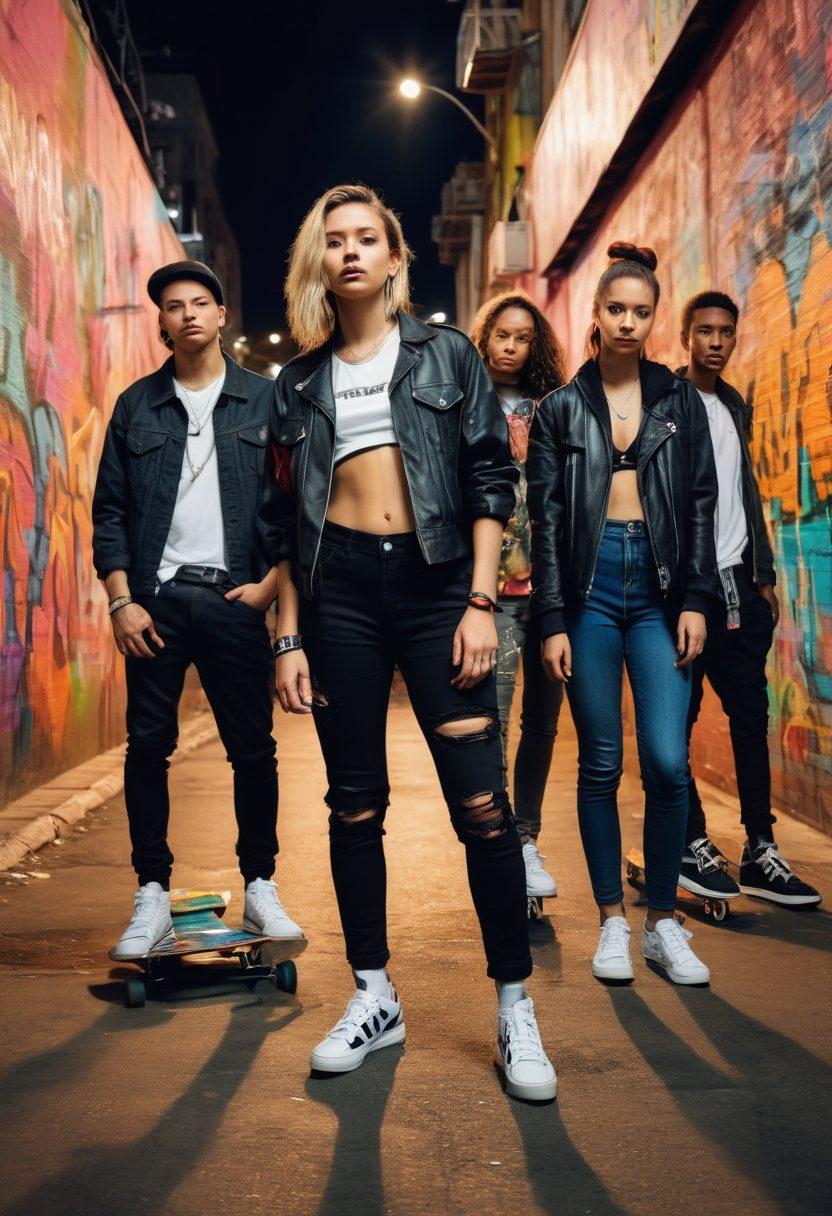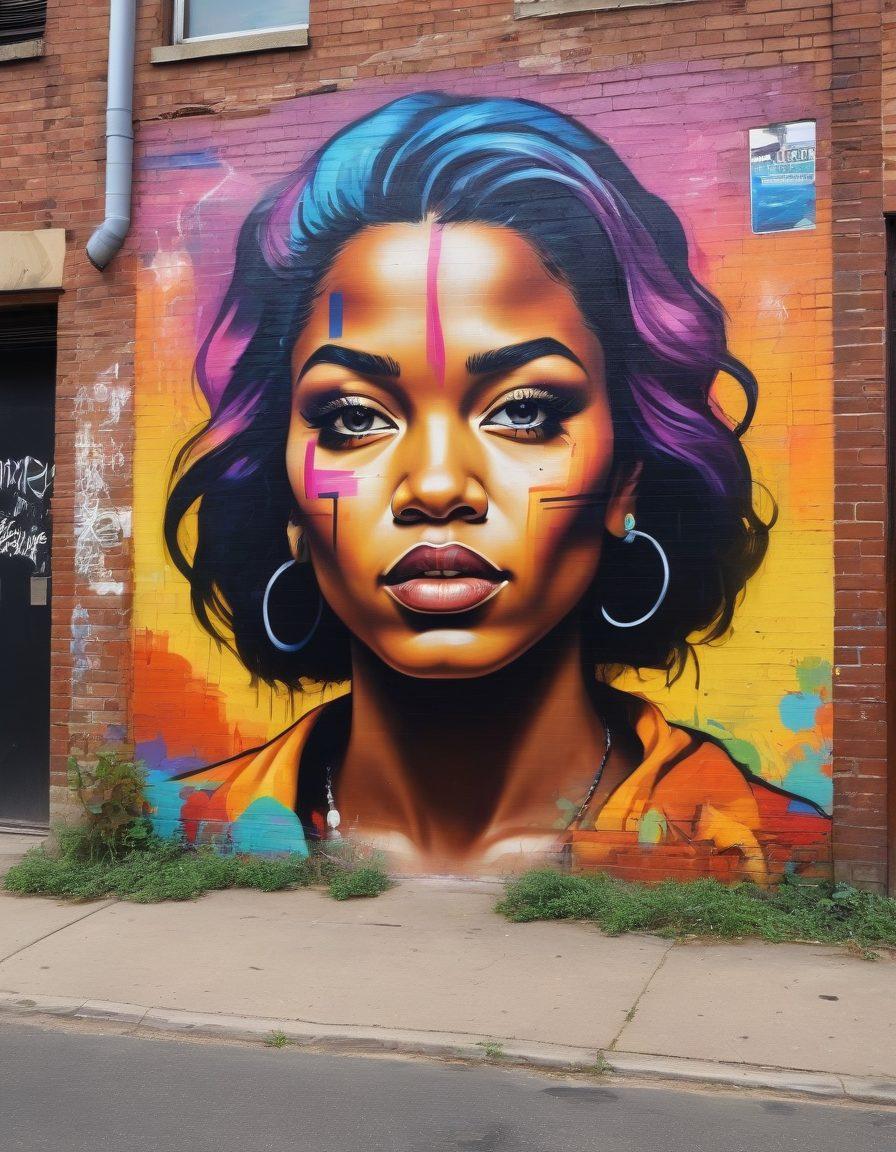Embracing the Underdog: The Rise of the Modern-day Rebel in Urban Culture
In the heart of every city, along the cracked pavement and graffiti-laden walls, a compelling tale unfolds. It's a narrative woven from the threads of desperation, creativity, and rebellion, often embodied by the urban underdog. What fuels this fascinating character? Who are these rascals and rebels that stride along the streets? As we explore the spirit of the urban underdog, we will witness how the 'badman' and 'hooligan', often labeled as thugs or gangsters, wear their identities not as a badge of shame but as a symbol of defiance and resistance against societal norms. These 'outlaws' are more than mere criminals; they are the storytellers of the streets, each with an experience teeming with grit and resilience.
In urban culture, the definition of a 'maverick' isn't confined to popular media's glorified gangster imagery. It encompasses the everyman—those who rise from the ashes of oppression to show the world what it truly means to be streetwise. The experiences of these 'ruffians' form the lifeblood of street art, music, and fashion that often sprout from forgotten corners of the city. Each brushstroke of graffiti or lyric sung carries the weight of an underdog's journey—a silent protest that yells louder than any billboard advertisement. One can't help but wonder: is the underground scene a celebration of rebellion or a mere reflection of our collective yearning for freedom?
As we delve deeper into the story of urban outlaws, we must acknowledge their multifaceted nature. To some, they may appear as mere mobsters or bandits, yet to their communities, they often act as local heroes—redefining the term 'antihero'. They face relentless societal challenges, constantly battling against the stereotypes that seek to box them in. Could it be that their authenticity stems from their refusal to conform? The attitude of nonconformity runs deep in the veins of these individuals, echoing through the alleyways, vibrating in the hearts of their fellow 'hood' dwellers. It begs the question: what if we chose to see these so-called 'thugs' and 'criminals' as mirrors reflecting our own struggles with societal expectations?
In a world that often glorifies the status quo, the urban underdog emerges as a beacon of authenticity. They carry the banner of 'thug life', pushing back against the constraints imposed by those who prefer safety in conformity. Their stories are significant reminders that every 'fall guy' has the potential to rise again, just as every rebellion can spark a movement. So why do we romanticize the idea of the outcast? Perhaps because they embody the spirit of triumph over adversity, demonstrating that societal limitations can be challenged. Isn’t it inspiring to think that the rebellious spirit found in the streets can fuel change beyond the urban landscape, resonating with individuals from all walks of life?
As we celebrate the defiance and resilience of the underdog, it becomes clear that urban culture thrives on these narratives. The 'hooligans', ruffians, and badmen might be misunderstood, yet their contributions to art, music, and lifestyle are undeniably profound. They inspire nonconformity, daring us to challenge the norms and celebrate the beauty in our uniqueness. Moving beyond stagnant stereotypes, there lies an invitation to embrace our inner rebel, to live life outside the square, and to engage with the world as it is—like street art: raw, vibrant, and bursting with possibility. So, let us foster an appreciation for the spirit of the urban underdog, recognizing that the streets may be tough, but they are also fertile grounds for hope and transformation, marking the rise of a modern-day rebel who dares to dream big amid adversity.
From Outlaws to Icons: How Modern Rebels Shape City Culture
In the heart of urban landscapes, a unique breed of individuals thrives—those who flout the mainstream and embrace their identity as rebels. Often labeled as ruffians, hooligans, or even outlaws, modern-day urban rebels challenge the status quo and inadvertently shape city culture. But what is it about this outlaw spirit that resonates so deeply with the masses? As the age-old saying goes, 'One person's criminal is another person's hero.' This paradox of perception is at the crux of why we find ourselves so intrigued by the modern-day maverick.
Take a moment to reflect. When you think about figures like Tupac or Banksy, do you picture the traditional hero? For many, these individuals represent defiance against a system that marginalized them. Tupac, a true badman, infused the 'thug life' mantra with a sense of purpose, transforming the narrative around the gangster lifestyle into something artful, poetic, and profoundly human. Meanwhile, Banksy's street art rebels against societal norms, using public spaces as his canvas and sparking conversations about resistance and the power of nonconformity. Through their work, we see that these underdogs are not just criminals, but rather, they are the antiheroes driving urban culture forward.
Perhaps it’s escapism that we crave from these figures. In a world cluttered with rules and expectations, the allure of the outlaw beckons us with an exhilarating promise of freedom. We dive into the gritty realities of street life, captivated by the stories of bandits and mobsters who defy societal norms. The documentary on urban culture opens our eyes to the struggles and triumphs of those who live on the edges—criminals, who in their own right are streetwise survivors, becoming reluctant icons of defiance and resilience. Their narratives challenge us to contemplate our own definitions of right and wrong. Are we not all in search of our own sense of identity?
Urban rebels embody the attitude of nonconformity, illustrating the belief that just because something is deemed unacceptable, it doesn’t mean it isn’t valid. They inspire subcultures to emerge and thrive, introducing fresh perspectives. This leads to the rise of street art, which gives a voice to those often unheard, a canvas for the frustrations and dreams of rascals who refuse to be confined by the norms. Whether through graffiti depicting the struggles of life in the hood or music that resonates with the pain of being a fall guy in a system rigged against them, these expressions carve out a cultural space that celebrates rebellion in its rawest form.
As we continue to navigate the complexities of urban culture, it's vital to recognize how these figures influence our understanding of society. They challenge conventional views and encourage us to view the world from alternative angles, pushing us to ask important questions: What does it mean to truly be an outlaw? Could embracing our inner rebel be the key to breaking free from societal constraints? From the tough resilience of a gangster to the artistry of a streetwise artist, the underdog narrative fuels a rich dialogue about identity, society, and creativity. Embracing the modern-day rebel is not only about celebrating defiance; it's about recognizing the beauty in resistance and the culture it endows our cities with.
Defiance and Resistance: The Evolution of the Thug Life in Today's Society
In the vibrant tapestry of urban culture, a new breed of hero has emerged—one that defies the mainstream, challenges societal norms, and embodies the spirit of rebellion. This figure, often referred to as the 'badman' or 'thug', has transformed the traditional image of the gangster into something much more nuanced and relatable. The evolution of the thug life isn't merely a celebration of criminality; it represents an intricate dialogue about defiance and resistance, where the underdog fights against a system that seems rigged from the start. What makes this journey so compelling is the storytelling intertwined with these characters—each a maverick in their own right, striving to carve a niche in a world that often devalues the voices of the marginalized.
Throughout history, we have witnessed the emergence of outlaws who capture the imagination of the public, from the notorious mobster to the rebellious ruffian. These figures display a nonconformity that resonates deeply within urban streets, reminding us that every gangster was once just a kid trying to find their place. As we observe the evolution of these antiheroes, it becomes clear that they are not just criminals, but complex individuals battling life’s injustices. This also begs the question: do we romanticize their rebellion, or do we see them for who they are? Through graffiti on crumbling walls and street art that sparkles with life, we gain insight into the psyche of those who choose the thug life—a culture rich with stories of struggle and survival.
In today's society, the concept of 'streetwise' has taken on new dimensions. The media often portrays the thug or hooligan with a lens of vilification, yet there is an underlying current of respect for those who fight against the odds. These are the individuals who embody an attitude of resilience and rebellion, refusing to be labeled as mere criminals. The emergence of street art has elevated the outlaw’s voice, showcasing their creative spirit in a world that wishes to silence them. Artists like Banksy use the canvas of the urban underbelly to challenge authority, provoking thoughts on injustice while simultaneously downplaying the role of the traditional badman. Isn't it fascinating how these modern-day rebels wield paint instead of guns?
Moreover, the thug life is more than just a lifestyle; it's a subculture that thrives on defiance. In a society that often views those from 'the hood' as less worthy, many rebels proudly embrace their roots, transforming what was once a label of shame into one of empowerment. The rise of the modern outlaw is not only about crime but about expressing one's identity, mitigating systemic oppression, and showcasing a culture rich in grit and authenticity. Young people look to these figures for inspiration, as they are often perceived as the fall guys battling a system that seems designed to keep them down. How can we harness this energy into something more positive, turning defiance into a tool for change rather than destruction?
Ultimately, the evolution of the thug life in today’s urban culture is a powerful testament to the complexities of resistance. Each story of the rebel or bandit weaves a narrative of hope, creativity, and most importantly, the quest for understanding and acceptance. As we grapple with these personas, we must question our own perceptions—is the outlaw merely a criminal, or are they a voice for the voiceless? This journey of defiance and resistance is not just an exploration of the dark corners of society; it’s a call to acknowledge the stories beneath the surface. In embracing the underdog, we not only celebrate their triumphs but also learn to recognize the multifaceted layers of humanity within us all.


